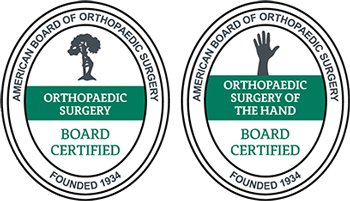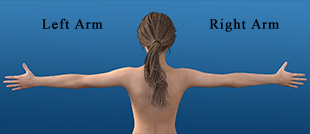Differences Between Boutonniere Finger and a Swan Neck Deformity
Boutonniere finger and swan neck deformity both impact proximal interphalangeal joints or the joints at the middle of the fingers. For this reason, some people confuse these two conditions. However, these conditions have more differences than similarities, including those outlined below.
Contents
Location

Despite its name, boutonniere finger may impact a finger or thumb. In contrast, a swan neck deformity can only impact fingers. Doctors never see true swan neck deformities impacting the thumb, as this condition must impact three joints. There’s a similar condition, commonly known as duck bill deformity. In this condition, the joint at the base of the thumb bends to form a 90-degree angle with the hand, while the thumb’s top joint is over-straightened.
Diagnoses
Doctors diagnose these conditions by observing the way the finger bends. With boutonniere finger impacting a finger, the joint at the base of the finger bends out away from the palm, the middle finger joint bends in toward the palm, and the outer finger joint bends out. When a thumb has this condition, it bends in at the first joint, then backward at the outermost joint.
In contrast, with a swan neck deformity, the joint at the finger’s base bends in, the middle joint straightens out, and the outer finger joint bends in. The swan neck deformity gets its name because the finger looks a little like a swan, with the bent-down outermost finger joint forming the swan’s head.
Radiology
While doctors can usually diagnose these conditions after a consultation, they may request X-rays to understand more about your hands. For example, you might need an X-ray if you developed boutonniere finger after an accident. This will help the doctor detect whether you have any broken bones attached to the central slip tendon, and it can be used to determine the severity of a swan neck deformity. Your doctor will be looking for a loss of joint space, which shows how far your condition has progressed and, therefore, what treatment options will suit you best.
Causes
Different events also cause boutonniere finger and swan neck deformity. Boutonniere finger usually occurs after a central slip dysfunction at the proximal interphalangeal joint. This often occurs during a traumatic injury, such as awkwardly catching a ball or jamming your fingers in a door. If you accidentally cut the tendons on the back of your finger or thumb, during a kitchen mishap, for example, you may also develop boutonniere finger. Tissue inflammation or tendon tears and weakening caused by conditions such as rheumatoid arthritis and osteoarthritis can also cause boutonniere finger.
Swan neck deformity might occur after ligaments on the palm side of the proximal interphalangeal joint tear or weaken. Rheumatoid arthritis, which weakens the joint by damaging its tissue, is the most common cause of swan neck deformity. This condition may also occur after an injury that tears the tendon that flexes this joint or impacts the tendon that straightens the outermost finger joint. As the middle joint extends, the finger’s other tendons slide back, making the extension more pronounced. Over time, the tendons lose their ability to straighten the end joint, causing the characteristic swan neck bend.
Other Symptoms of These Conditions
Both conditions have other symptoms aside from how they make the fingers look. People with boutonniere finger struggle to straighten their impacted finger or thumb. This condition is also progressive. The end joint may not bend backward at first, but over time, all the bends in the finger or thumb become more pronounced. Without treatment, people with boutonniere finger typically feel stiffness in the impacted digit. The condition may also become permanent without intervention.
Swan neck deformity can make bending the impacted finger difficult. If you have this condition, you might notice a snapping sensation when you try to move your fingers. As with boutonniere finger, people with swan neck deformity may also notice stiffness if they don’t receive treatment. However, unlike boutonniere finger, treatment can usually return a finger with swan neck deformity to its original state, no matter how delayed the treatment is.
Non-Surgical Treatment
There are many treatment options for boutonniere finger and swan neck deformity. The right treatment option for you depends on different factors, such as the severity of the condition, its cause, and whether you’re experiencing stiffness. A hand doctor or surgeon can advise you which treatment option might work best for you.
Splinting can be a good treatment option for boutonniere finger, especially if you receive this treatment shortly after an injury. Doctors may recommend splinting on its own or as part of a more comprehensive treatment plan, especially if the boutonniere finger results from a chronic condition such as rheumatoid arthritis. If you have swan finger deformity, you can wear a special ring that corrects the finger’s position. Doctors will also usually treat any underlying illnesses that caused these hand conditions, such as by prescribing medications and encouraging exercise and weight loss to manage rheumatoid arthritis.
Surgical Treatment
Surgery is a treatment option for both conditions, although the type of surgery varies. If you have cut tendons that caused boutonniere finger, the surgeon may recommend repairing them. Early repairs usually get the best results, although you should have realistic expectations. Surgery may improve the look and feel of a boutonniere finger, but it’s unlikely to move the joints back to their original position.
Most surgeries for swan neck deformity focus on moving the middle joint back to a more natural position. Your surgeon may reposition the tendons on the side of this joint. If your joint is arthritic or feels stiff, the surgeon might replace it or fuse it into a slightly bent, more natural-looking position.
If you feel you might have boutonniere finger, swan neck deformity, or another hand condition causing pain or embarrassment, help is just a phone call away. Contact the Hand and Wrist Institute to schedule an appointment with our experienced health team. We’ll take the time to listen to your concerns, assess your condition, and offer personalized treatment options.
Black swan. (Cygnus atratus) by Bernard Spragg. NZ is licensed with CC Public Domain Mark 1.0

























